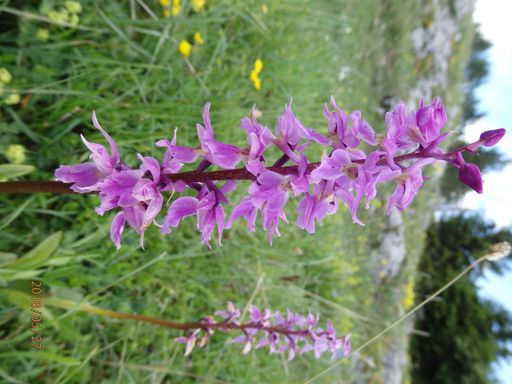Mountain hay meadows or mountain hay meadows are among the most endangered habitats in Central Europe. Compensation payments in the Austrian Agri-Environmental Program (ÖPUL) provide targeted incentives to ensure agricultural management and thus the keeping of these particularly species-rich areas open and to protect them from bush encroachment – with initial successes, as the latest figures prove.
“Mountain hay meadows are particularly species-rich habitats that are closely linked to farming. By mowing the high, often steep, difficult-to-access areas and keeping them open, farmers not only provide their livestock with fodder, but also promote high altitude Biodiversity. However, if the farms give up cultivation, the light-requiring plant, animal and fungal communities typical of alpine meadows also disappear, as the valuable areas are quickly overgrown and the species are displaced. It is therefore important to continue to motivate the farmers “To manage the meadows as before and to maintain the particularly high level of biodiversity,” emphasizes Josef MoosbruggerPresident of the Austrian Chamber of Agriculture.
Mountain hay meadows are areas that occur in mountains at around 1,200 meters above sea level. It is divided into fertilized fat meadows and unfertilized lean meadows, which are mown at different times and may also be grazed from mid-August. Mountain fat meadows are usually located in the immediate vicinity of the alpine pastures in an almost flat location (Almanger). dr. Andreas Bohnerhead of the environmental ecology department at the HBLFA Raumberg-Gumpenstein, explains that such areas can contain a variety of 35 to 55 plant species per 50 m2.
Highest biodiversity on mountain moors
Mountain meadows are even more species-rich. These poor meadows are not fertilized and are only mown once a year to prevent the soil from becoming depleted. “Many rare and endangered species grow on such sites. Up to 96 plant species can occur in an area of 50 m2. This is an absolute top value in a European comparison. These poor meadows are therefore of great importance from a nature conservation and landscape aesthetic point of view,” explains Bohner . Typical plant species that occur in these areas are, for example, the Turk’s-cuff lily, the man’s orchid and the bearded carnation. Since many insects depend on special flowers, mountain hay meadows and mountain hay meadows also offer a rich supply of food for bees, butterflies, etc., but also for fungi.
“The steepness, location and accessibility make the maintenance of the mountain hay meadows difficult and time-consuming; painstaking manual work is often necessary. That is why these habitats are considered particularly at risk. Preservation not only requires a lot of idealism on the part of the managers, but also farm animals that eat the grass and hay and transform it into food of the highest quality,” emphasizes Moosbrugger. “Due to the many plants and herbs, the green fodder is considered particularly valuable, which can also be tasted in products such as milk, butter, cheese and meat. Farmers and livestock are therefore equally important for the biodiversity of these regions,” emphasizes Moosbrugger.
However, if management is lacking, biodiversity also becomes impoverished. The risk of soil erosion – especially plaque – also increases. This refers to meadow areas on steep slopes that are slipping along with the root horizon. Due to bush encroachment, landslides and the loss of landscape and life diversity, these areas are also losing their cultural and aesthetic value – for locals as well as for tourism. After all, the meadows are characterized by a special splendor of flowers and attractiveness.
Tightening of the ÖPUL measure is showing initial success
In order to preserve these endangered habitats, targeted measures will be taken in the new period of the Common Agricultural Policy (CAP). “With the revision of the ÖPUL measure ‘Management of mountain hay meadows’, the mountain hay meadow area increased again last year. Nationwide, it amounts to around 15,000 hectares, which is almost the same as in 2015. In Tyrol, where most mountain hay meadows are can be found, the numbers of over 7,100 hectares even slightly exceed those from 2015,” reports the LKÖ President with regard to the 2023 data.
Compensation, market success and cooperation with tourism are important
“We achieve more with incentives than with coercion. It is important to do something for biodiversity together with farmers, rather than against or without it. Additional compensation for the additional output is more likely to achieve the goal than bans or impractical requirements. One is sufficient High funding for the ÖPUL measures and increased cooperation with tourism are essential for the future in order to continue to preserve threatened mountain hay meadow areas,” explains Moosbrugger. “It is also extremely important that prices for the valuable food produced on these areas are commensurate with the effort.” (End) kra
